Yoga poses and physical activity may help encourage farting and relieve trapped gas. Certain foods, drinks, and abdominal massages may also help.
There may be times when you’re feeling bloated and uncomfortable due to trapped gas.
Certain yoga poses can help you to release air. Yoga aids in relaxation throughout the entire body. Eating certain foods can also help.
Read on for more tips on ways to encourage farting to help release gas.
Here are a few poses that target the areas of your body that help you pass gas.
Pay special attention to how you breathe, and practice deep breathing. With each inhale, allow your belly to expand. Draw your navel toward your spine with each exhale.
1. Wind-Relieving Pose (Pawanmuktasana)
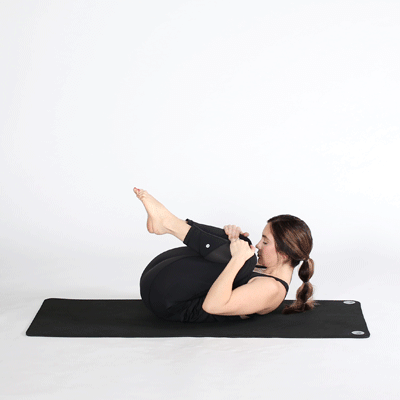
This pose will help you relax your abdomen, hips, thighs, and buttocks. To perform the pose:
- Lie on your back and bring your legs straight up to 90 degrees.
- Bend both knees and bring your thighs into your abdomen.
- Keep your knees and ankles together.
- Bring your arms around your legs.
- Clasp your hands together or take hold of your elbows.
- Lift up your neck and tuck your chin into your chest or bring it onto your knees.
2. Child’s Pose (Balasana)
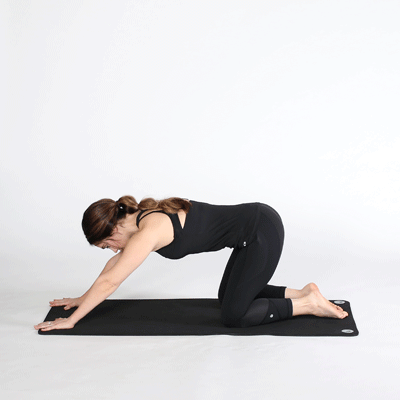
This asana relaxes your lower back, hips, and legs. It’s believed to massage your internal organs.
- Start in a kneeling position and sit back on your heels.
- Adjust your knees so that they’re hip-width apart or slightly wider.
- Slowly walk your hands out in front of you as you bend at the hips.
- Allow your torso to rest on your thighs.
- Lengthen the back of your neck and rest your forehead on the floor.
- You may keep your arms extended or bring them alongside your body with your palms facing up.
- Allow your belly to fall heavy into your legs. Maintain a gentle pressure to this area.
- Rest in this pose for 5 breaths.
3. Seated Forward Bend (Paschimottanasana)
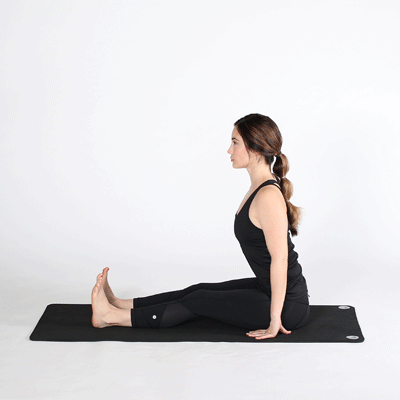
This pose improves digestion and relaxes the body.
- Sit with your bottom on a yoga mat or folded blanket with your legs extended in front of you.
- Press through your heels and draw your toes back toward your shins. You can keep a slight bend in your knees.
- Place your hands alongside your body and press into the floor as you lengthen your spine.
- Open your heart center as you root into your sit bones.
- On an exhale, slowly hinge at your hips and fold forward.
- Walk your hands alongside your body. Rest them on the floor or on your legs. You can also clasp your hands around your feet.
- With each inhale, lift your torso slightly and lengthen your spine.
- On each exhale, lower yourself deeper into the pose.
- Stay in this pose for 8 to 10 breaths.
4. Two-Knee Spinal Twist Pose (Supta Matsyendrasana)
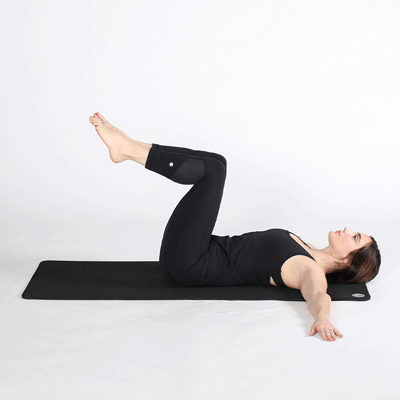
This pose is thought to improve digestion by massaging, stretching, and toning your internal organs.
- Lie on your back and bend your knees to bring your legs into your chest.
- Extend your arms to the side so they are in line with your shoulders.
- Keep your palms facing down.
- Exhale as you bring your legs over to the right side.
- Keep your knees as close together as possible. Your knees should be at hip level.
- Use your right hand to press into your right knee.
- Turn your gaze to look over to the left side. You can also keep your neck neutral or look to the right.
- Hold this pose for 10 slow breaths, then repeat on the opposite side.
5. Happy Baby Pose (Ananda Balasana)
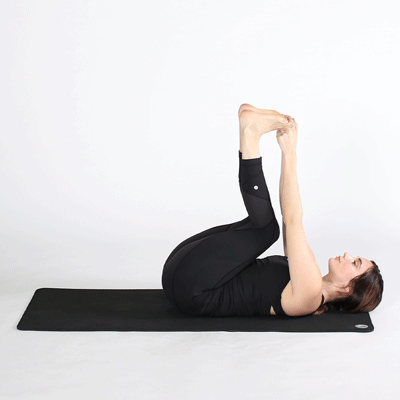
The Happy Baby Pose stretches your inner groin and lower back. It helps to relieve stress and calm the mind.
- Lie on your back with your knees bent along the side of your body and the soles of your feet facing toward the ceiling.
- Allow your lower back to flatten along the floor. Don’t roll back toward your shoulders.
- Bring your hands to the outside of your feet.
- Use your hands to pull your legs down as though you want to bring your knees all the way down to the floor.
- Press up into your hands through the soles of your feet to create resistance.
- Stay in this pose for several breaths.
In addition to yoga, other physical activity may help with farting and relieving gas.
To help encourage passing gas, try doing some light physical activity or exercise after meals.
Certain foods and beverages may help you pass gas. These include:
Abdominal massage can help aid digestion and relieve pain caused by gas.
To perform an abdominal massage:
- Lie on your back. You may wish to place a pillow under your knees for comfort.
- Place your hands on your lower abdomen and focus on your breathing.
- You may wish to apply massage oil to your abdomen at this stage.
- Perform any of the following to massage the abdomen:
- Stroke the flat of your hands up toward your ribcage.
- Move both hands from the small of your back to over your hips and toward the groin.
- Use one hand or both hands to massage the abdomen in a clockwise motion.
- Make a fist and move it in circular motions from the top of the abdomen down toward the groin.
A medical professional can provide more advice on techniques for massaging the abdomen.
Physical activity, including some yoga poses, may help encourage farting. Yoga poses to try include Wind-Relieving Pose (Pawanmuktasana), Child’s Pose (Balasana), Seated Forward Bend (Paschimottanasana), Two-Knee Spinal Twist Pose (Supta Matsyendrasana), and Happy Baby Pose (Ananda Balasana).
Some foods and drinks cause gas, which can lead to farting. These include Brussels sprouts, cauliflower, cabbage, broccoli, beans, lentils, onions, and soda.
Abdominal massage can also help. This involves lying on your back and performing various hand movements, such as massaging in a clockwise motion and making circular motions with a fist.
Speak with a doctor if you have concerns about gas. They can advise on ways to relieve symptoms and encourage passing gas.




